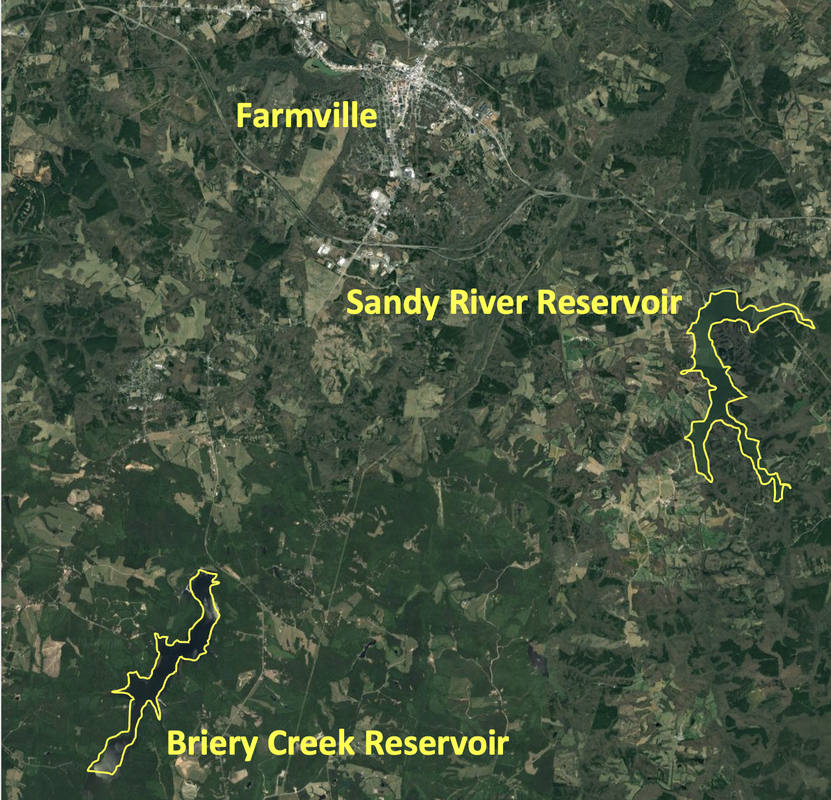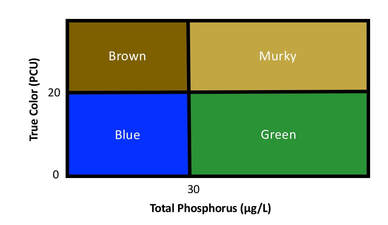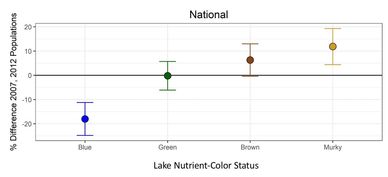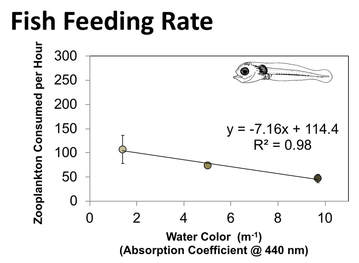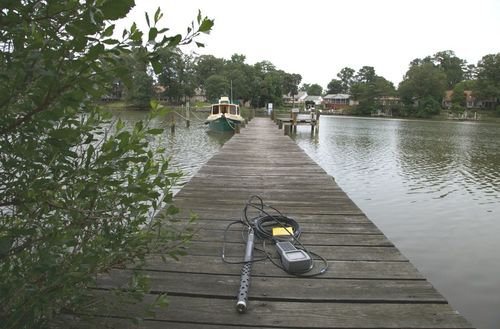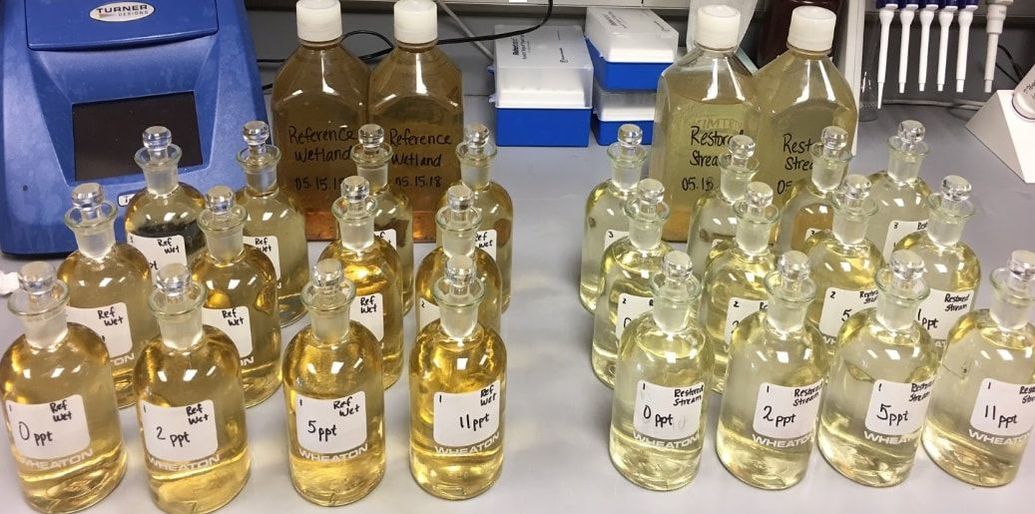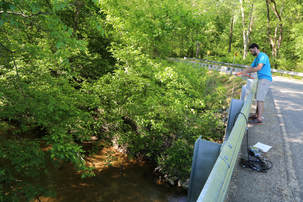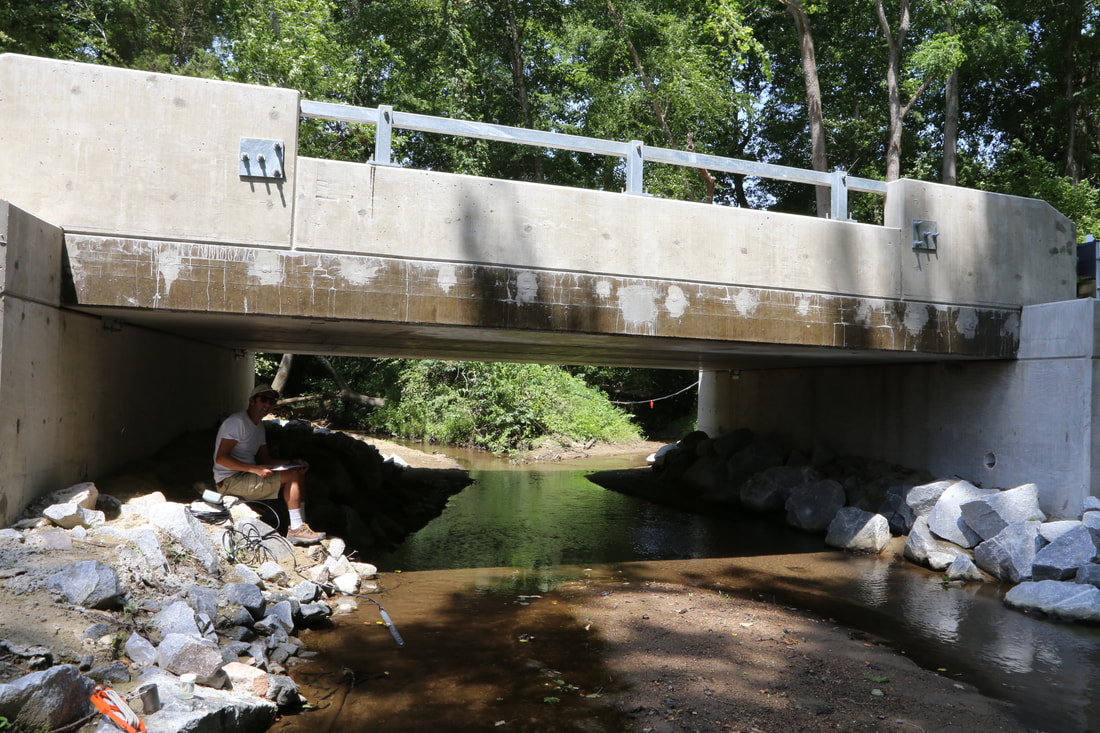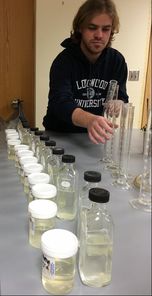Using BIG Data to Help BIG Bass |
|
Briery Creek and Sandy River Reservoirs in Farmville, VA are widely recognized for their trophy largemouth bass fishery. However, annual stock assessments in the lakes suggest that younger life history stages of bass are not as abundant in Briery Creek Reservoir compared to Sandy River Reservoir. This leads to questions regarding the long-term sustainability of the bass fishery in Briery Creek. Our objectives are 1) to create an environmental database of water quality information collected by the VA Department of Environmental Quality combined with fisheries data from the VA Department of Wildlife Resources, and 2) to assess possible trends in water quality that correlate with fish population dynamics in the two reservoirs.
Presentations:
|
Nutrient-Color Status of US LakesIn collaboration with Amina Pollard (US EPA), Stephanie Labou (Washington State University), and Stephanie Hampton (NSF, Washington State University), we have been examining the nutrient-color status of lakes across the continental United States using data from the EPA's National Lakes Assessment Program. Our results indicate that blue lakes are declining while murky lakes are increasing. Murky lakes exhibited the highest epilimnetic chlorophyll-a concentrations, cyanobacterial densities, and microcystin concentrations. Total zooplankton biomass was also highest in murky lakes. However, zooplankton:phytoplankton biomass ratios were low, suggesting reduced energy transfer to higher trophic levels. These results emphasize that many lakes in the U.S. are simultaneously ‘greening’ and ‘browning’, with potentially negative consequences for water quality and food web structure.
|
Publications:
- Pollard, A.I., Hampton, S.E., Leech, D.M. 2018. The promise and potential of continental-scale limnology using the U.S. Environmental Protection Agency's National Lakes Assessment. Limnology & Oceanography Bulletin. DOI 10.1002/lob.10238.
- Leech, D.M., A.I. Pollard, S.Labou, and S.E. Hampton. 2018. Fewer blue lakes and more murky lakes in the U.S.: Implications for planktonic food webs. Limnology and Oceanography, doi.org/10.1002/lno.10967.
Freshwater "Browning" and Zooplankton-Fish InteractionsIn recent decades, freshwater and coastal ecosystems in the Northern Hemisphere have become increasing browner in color due to increased inputs of terrestrial organic matter. We have been examining the direct and indirect effects of this "browning" on larval fish feeding behavior. Our results suggest larval fish growth and survival are compromised more by indirect effects than direct effects. As the water darkens in brown color, light availability for phytoplankton is reduced. Consequently, reductions in phytoplankton abundance lead to reductions in zooplankton abundance. Larval fish then have less prey to consume, and therefore, spend more energy searching for food.
Publication:
|
Organic Matter Exports to EstuariesTraditionally, regions of low dissolved oxygen, also referred to as ‘dead zones’, have been attributed to excess nutrient runoff. Recent studies, however, suggest that the export of dissolved organic matter (DOM) from land to coastal waters can also result in low dissolved oxygen through the stimulation of bacterial growth. When DOM from freshwater streams mixes with saline estuarine waters, flocculants of particulate organic matter are produced, providing potential habitat for bacteria to attach and access increased carbon and nutrients. We have recently begun investigating the response of bacteria to flocculant production using fresh water from two streams at Longwood’s Baliles Center for Environmental Education, Westmoreland County, VA, which drain to tributaries of the Chesapeake Bay.
Presentations:
|
Longwood University Water Quality Monitoring ProgramLongwood University, in collaboration with Clean Virginia Waterways, has been assisting the Virginia Department of Environmental Quality in monitoring the upper Appomattox River Watershed for almost 20 years. In 2016, Dr. Leech took over as Director of the program, which focuses primarily on sampling coliform concentrations in local streams. Long-term trends in the dataset reveal correlations between high E. coli concentrations and land use patterns. Streams with increased agricultural and urban activity typically have more E. coli contamination than those that are surrounded by forest.
Poster Presentation:
|
